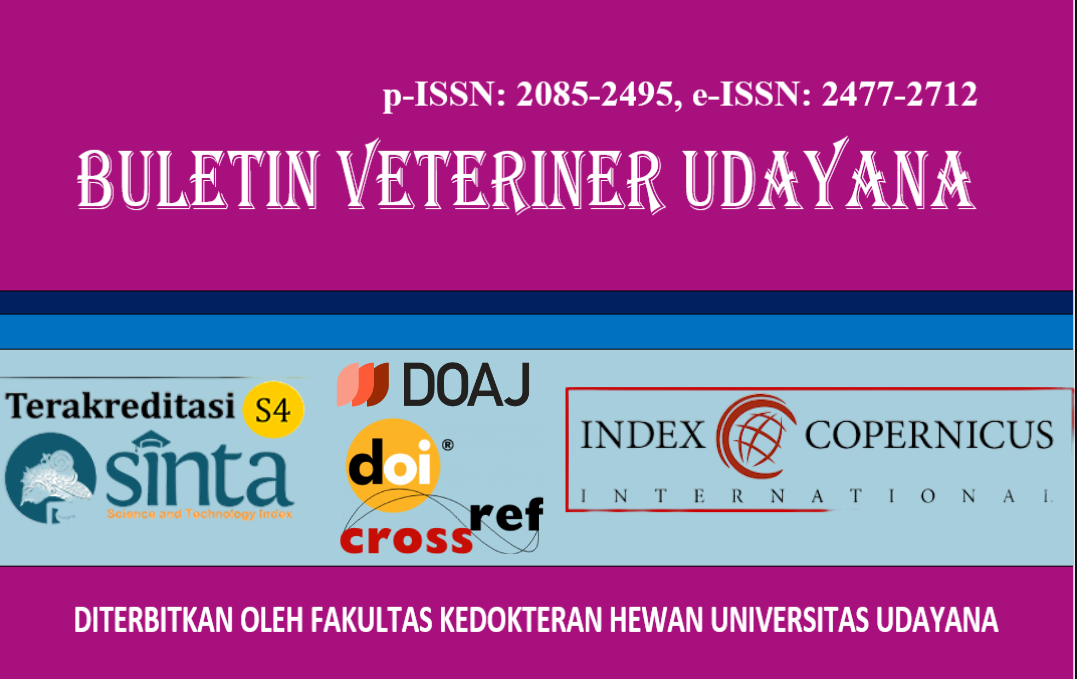DOG DEMOGRAPHY IN RABIES CONTROL EFFORTS IN BANJAR SIBANG AND BANJAR BRAHMANA, SANGEH VILLAGE, BADUNG BALI
DOI:
https://doi.org/10.24843/bulvet.2024.v16.i03.p05Keywords:
rabies, demographics, rabies vaccinationAbstract
Rabies is a zoonotic disease caused by a neurotropic virus of the genus Lyssavirus in the family Rhabdoviridae. A rabies case was detected in Bali in November 2008 in Badung Regency. This study aimed to determine the demographic characteristics of Banjar Sibang and Brahmana of Sangeh Village, Abiansemal Subdistrict, Badung Regency, Bali in an effort to control rabies. This study used an observational study design, by collecting data on dog demographics including: population, sex, breed, age, husbandry system, Body Condition Score (BCS) and vaccination coverage. The method used was a survey by interviewing a total of 27 households of dog owners in Banjar Sibang and 43 households in Banjar Brahmana. Data collection was conducted by census (door to door) by interviewing dog-owning households using questionnaires, and direct observation of unowned dogs. From the research, the following results were obtained as of January 2024: the ratio of humans to dogs in Banjar Sibang is 11.8:1 and in Banjar Brahmana 10.3:1. The dog rearing system in both banjars is mostly done by releasing with a percentage of 78.8% in Banjar Sibang and 87.5% in Banjar Brahmana. Vaccination coverage in each banjar reached 100% and 85%, respectively. In conclusion, based on population data, the ratio of people to dogs in the study area to FAO standards is not ideal or in a rabies-prone condition with a ratio below 16:1. Although vaccination coverage in both districts exceeded WHO standards, it is necessary to continue expanding rabies vaccination programs, especially in areas with high dog-to-population ratios. Mass sterilization programs and more attention to husbandry systems are recommended to control dog populations and the spread of rabies.




